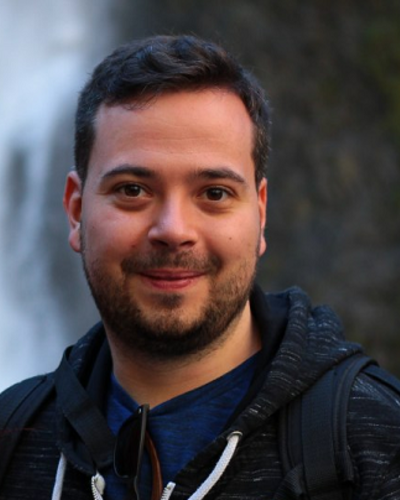- E-mailTobias.Rindfleisch@uib.no
- Visitor AddressHøyteknologisenteret i Bergen / DatablokkenThormøhlensgate 55N-5008 BergenRoom508O1
- Postal AddressPostboks 78035020 Bergen
During his bachelor’s degree in biochemistry and subsequent master’s degree in bioinformatics at the University of Potsdam (Germany), Tobias Rindfleisch focused on the study of intrinsically disordered proteins at the Department of Physical Biochemistry (Robert Seckler, Anja Thalhammer) in close collaboration with the Max Planck Institute of Molecular Plant Physiology (Dirk Walther). This was followed by a two-year position as researcher in the group of Ute Armbruster at the Max Planck Institute of Molecular Plant Physiology (Potsdam, Germany) where he was interested in the investigation of protein-ligand interactions via molecular dynamics simulations. In 2022 he started his PhD at the University of Bergen in the High-Fidelity Biomolecular Modelling Group at the Department of Chemistry and the Computational Biology Unit (CBU). His PhD project is related to testing and developing molecular dynamics models of intrinsically disordered proteins against NMR relaxation data under the supervision of Markus Miettinen.
- (2024). The thylakoid proton antiporter KEA3 regulates photosynthesis in response to the chloroplast energy status. Nature Communications.
- (2023). Eukaryote-specific assembly factor DEAP2 mediates an early step of photosystem II assembly in Arabidopsis. Plant Physiology. 1970-1986.
More information in national current research information system (CRIStin)
You can find an overview of my publications by viewing my Google Schoolar profile
https://scholar.google.de/citations?user=du6K0lsAAAAJ&hl=en
Intrinsically disordered proteins (IDPs) are defined by a lack of a defined 3D structure in aqueous solution. They behave like flexible and strongly dynamic random coils, but demonstrate a characteristic distribution over the conformational space, the so-called structural ensemble. However, IDPs perform important and specific functions at the cellular level and at the super cellular level of the organism.
Molecular dynamics (MD) simulations of IDPs represent a complex problem in bioinformatics, because the most common IDP-specific force fields are not able to describe the dynamics and thus the flexible motions of disordered proteins accurately. In consequence, the development of a force field, which is capable of reproducing the dynamics for IDPs correctly, as confirmed by validation against experimental NMR data, is of special importance.
This project is motivated by the finding of Oh et al. (2012) that dipeptides behave similarly to disordered proteins, suggesting that these elementary building blocks can be used to calibrate an IDP-specific MD model.
A gradient-free evolutionary approach will be used to automatically optimize a previously selected and well performing force field; here the force field parameters are iteratively adjusted to obtain an improved match between the resulting protein dynamics in MD simulations and in NMR experiments (relaxation times, homo and hetero nuclear Nuclear Overhauser Effect). Importantly, the corresponding NMR observables can be computed from the MD simulations directly, without assuming an intervening model. The NMR experiments are performed at the Norwegian NMR Platform.
